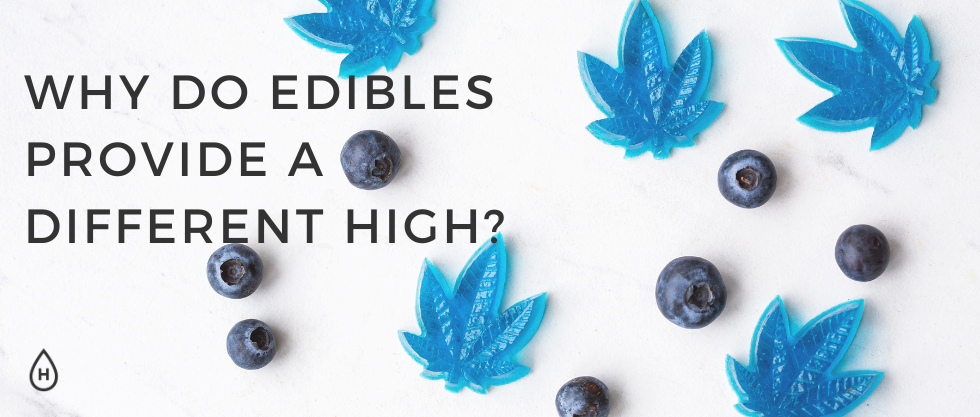We all know the trope behind edibles. Countless forms of media depict edibles as a downright almost psychedelic experience. Users often either can’t move from where they’re sitting or experience a hallucinogenic high. Yet, compared to smoking or vaping, the high from edibles is assertively unique — but why? Why do edibles provide a different high?
What could make this particular experience different from the traditional smoking method? Is it as powerful as the movies depict? How cannabinoids interact with the brain and how you consume them can drastically alter the effect.
Everything from how we grow cannabis to how we process and prepare it can potentially alter cannabinoids — including THC and CBD. Then, how you consume the plant plays a significant role. And edibles have even more things to consider when it comes to potency. With flower as the most crucial factor, edibles are a breed of their own when getting your THC fix.
The best way to understand why edibles provide a different high is to start by understanding what edibles are. From there, we can look at what changes when turning cannabis into an edible. Let’s dive into what sets edibles apart.
Why Edibles Provide a Different High: What is an Edible?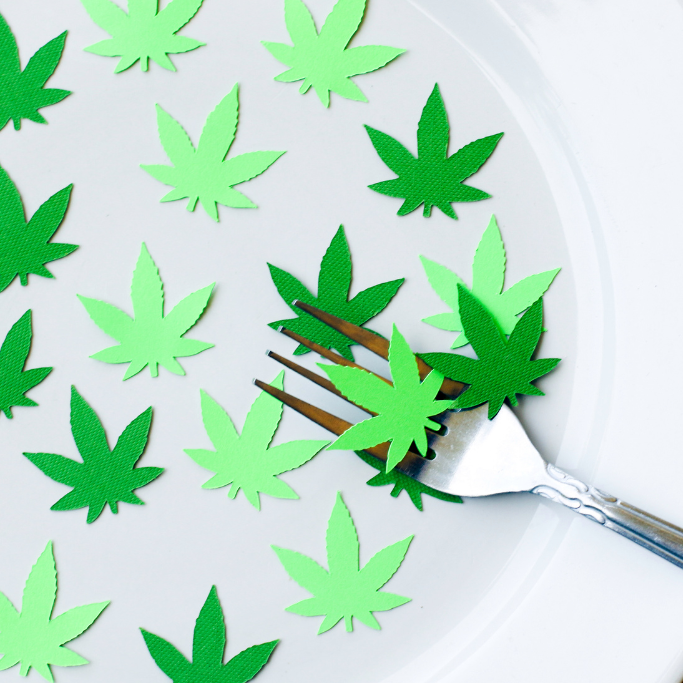
Knowing what an edible is helps reduce any confusing information floating around on the internet. So, let’s start with the basics. What is an edible? In the cannabis world, an edible is any food product you infuse with marijuana. These can be baked goods like brownies and cookies or even hard candies like lollipops.
Sweets are not the limit when it comes to edibles, either. Savory flavors also have a home in the world of edibles, with treats like chips, jerky, and even crackers finding their way to shelves. It’s more difficult than not to find a food that doesn’t have a THC-edible version.
Likewise, edibles, as a concept, are not new. There are records of prescription marijuana tea used as early as 2737 BCE. Emperor Shen Neng of China prescribed the tea as a treatment for malaria, rheumatism, gout, and even poor memory.
From its early recorded history in India, edibles spread in popularity across Europe and eventually found their way into media. In 1968, the film “I Love You, Alice B. Toklas!” cemented the edible brownie as the universal symbol of marijuana-infused food.
As the legal situation around THC and marijuana became more relaxed and accepted, a more comprehensive range of edible combinations became available to the public.
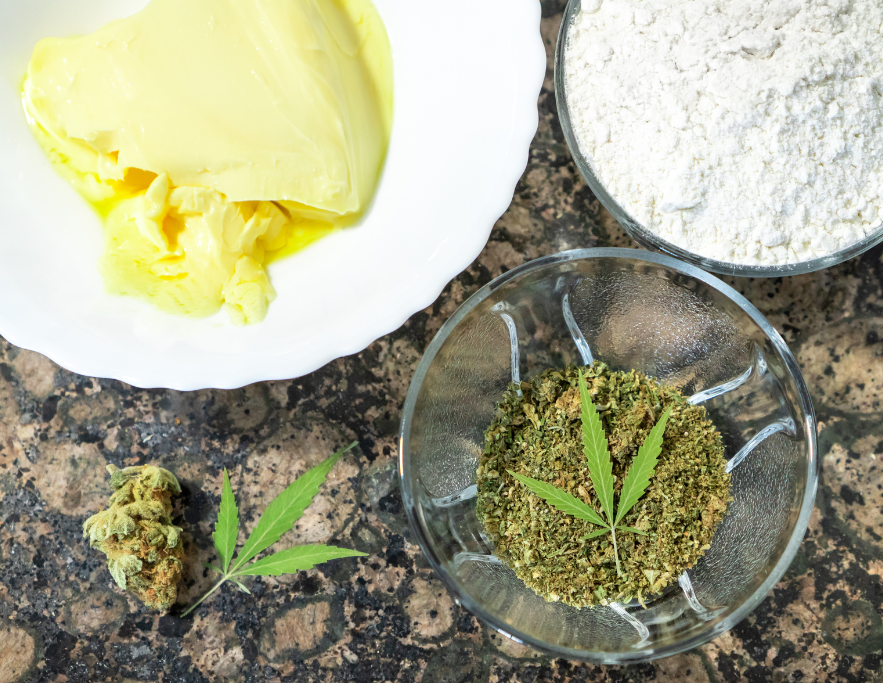 How Does One Make Edibles?
How Does One Make Edibles?
More work goes into the production of edibles compared to standard flower. In short, THCa grows in marijuana naturally. THCa is the THC that gets activated into regular delta-9 THC when a consumer lights up. Therefore, there’s no additional work outside of harvesting, drying, and treating for it to be ready to smoke.
For THC-infused edibles, however, cannabis must undergo carboxylation, a process that activates the THC. From THCa, through heat, THC is born, potent in its new form.
Typical smokable flower is more than capable of delivering the potent, long-lasting effects many consumers seek. However, smoking isn’t always the best, or even feasible, for some. Maybe it’s too harsh on the lungs, or you live where smoking is frowned upon. Edibles provide the perfect solution as an alternative.
Edibles come in various forms, including everyday food items, primarily sweets or gummies. The THC is isolated and added to the food items using a carrier oil. Usually, this comes in the form of butter, coconut oil, or even other similar substances.
The concentrated THC infuses the edible with potent and easily measurable amounts that have a powerful impact.
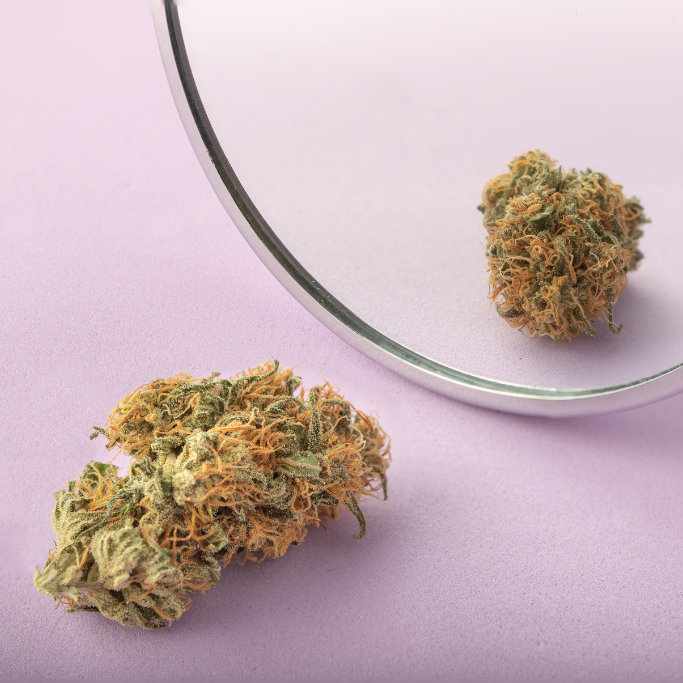 Why Edibles Provide a Different High:
Why Edibles Provide a Different High:
Is the THC in an Edible the Same as in Raw Flower?
Cannabis compounds such as Delta-8 THC, Delta-9, THC-O, and many other cannabinoids continue to flood the market. Each has a different set of effects associated with them.
But it’s important to remember that the way you take THC affects the outcome just as much as what kind it is.
THC-infused edibles provide the same type of THC as someone would smoke straight from flower. The chemical compound is no different. The absorption method, and the overall amount of THC, make all the difference.
When smoking, THC transfers almost immediately from the lungs to the blood. The quick change over lets you experience an instant high and doesn’t alter the THC before being sent throughout the body. The delta-9 THC doesn’t make it into the blood with edibles until the liver processes it.
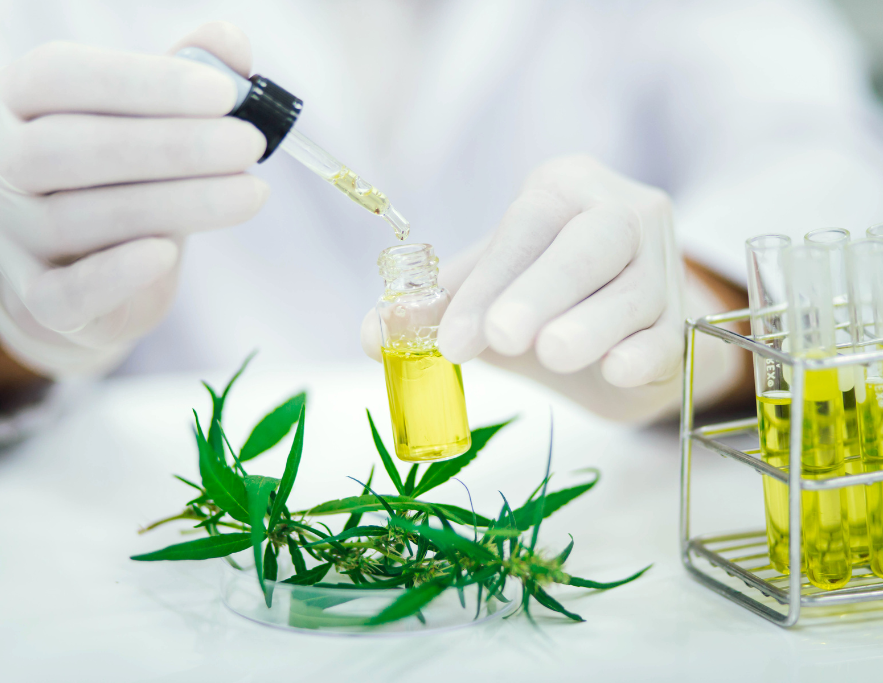 How Do We Measure an Edible’s Potency?
How Do We Measure an Edible’s Potency?
Since the THC content is concentration-based, a different method to measure edibles is necessary. Usually, marijuana is measured by the gram, with a percentage denoting how much THC is in it. The technique involved is reasonably accurate as far as the THC content is concerned.
Edibles get measured in a completely different manner. For example, other ingredients like carrier oils have varying base weights.
Instead, edible THC uses milligrams to measure its content levels. Milligrams represent the total weight of the THC concentrate instead of the product’s overall weight. The normal range for an Edible is between 5 milligrams and 500 milligrams of THC per serving.
The range of potency in edibles gives a lot of wiggle room to find what works best. Starting on the low end, such as 5 milligrams, is a good idea for people new to the experience. That way, even an experienced smoker can feel the difference between flower and edibles without it becoming overwhelming.
How Do We Metabolize Edibles?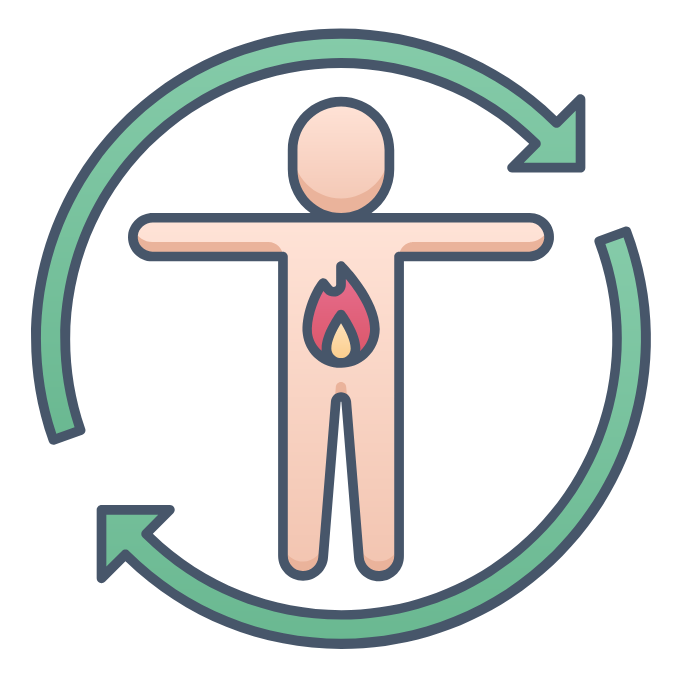
The process of absorption is what makes all the difference with edibles. While smoking THC quickly introduces the cannabinoid to the blood, it also does so wholly unaltered. As a result, THC will set in soon and have a consistent trip time. The speed and intense high are a result of lung absorption. With edibles, the route is much different.
After THC ingests, edibles must go through the entire digestive system. As a result, the process takes considerably longer to kick in when compared to smoking or vaping. But that’s not the only difference.
THC that travels through the digestion method gets processed in the liver.
The journey doesn’t end there, however. Once the Delta-9 THC crosses into the liver, it converts into a new compound: 11-hydroxy-THC. This transformation between cannabinoid compounds causes a different reaction in the brain and a longer high overall.
Then, our bodies metabolize THC through a handful of enzymes. Specifically, those enzymes in our bodies are known as CYP2C9 and CYP3A4.
Finally, THC is converted during the metabolization into 11-hydroxy-THC before being introduced into the bloodstream.
What is the First Pass Effect?
A drug you must administer orally is subject to the known phenomenon of the first pass effect. This “first pass” consists of a drug passing through the entire GI tract before reaching the liver.
Once the drug reaches the liver, it begins to disseminate throughout the body by entering the bloodstream. The entire process changes the concentration levels of the substances and introduces the metabolites from the liver alongside them.
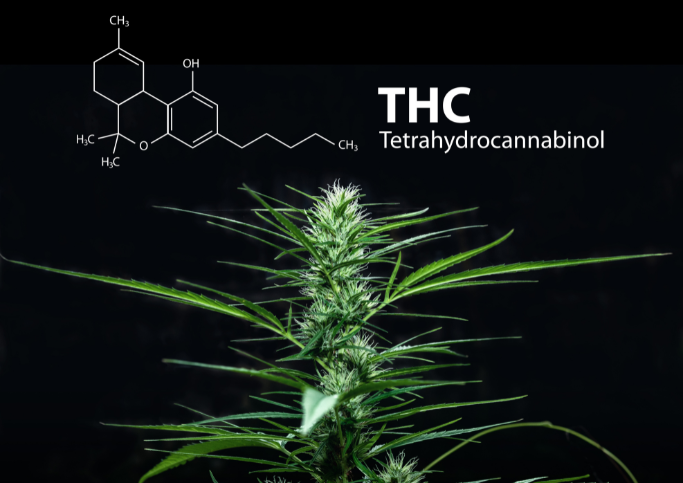
The THC molecules themselves change from THCa to an entirely new composition. THCa is the base form of THC before combustion changes it while smoking. When THCa passes through the liver, the resulting change is known as 11-hydroxy-THC.
What is 11-hydroxy-THC?
Understanding the difference between edibles and smokable flower necessitates understanding THC in the human body. 11-hydroxy-THC is the third form of THC. When consumed, THC will metabolize in the liver into 11-hydroxy-THC and then 11-nor-9-carboxy-THC.
11-hydroxy-THC is thought to be up to 3 times as potent as THC and can potentially have much more potent psychoactive effects. However, for this much more concentrated form of THC, the orally consumed THC must be digested first.
Can You Take Too Many Edibles?
There is much debate over what constitutes too much THC. The jury is still out on which cannabinoid compounds pose a risk. Standard Delta-9 and Delta-8 THC have an incredibly high ceiling regarding how much is safe to ingest.
It is improbable that the average person will ingest a dangerous amount of THC. Someone rarely needs to visit a hospital for cannabis compounds. That doesn’t mean less severe, but still, adverse effects are out of the question.
A “slow-and-low” method is ideal to avoid possible adverse side effects. A starting dose of 2-3 mg starting dose is a good safety start. After an hour or two, you should know how a low amount affects you and can take another 2-3mg if needed.
When dosing, you can always add more but never take away from how much you ingest, so it’s best to stay cautious.
How Long Does an Edible High Last?
The high from an edible is the feature that sets it apart the most. Most people are familiar with the process of smoking cannabis. The effects kick in almost immediately and typically last up to 3 hours. Edibles can take up to 2 hours to start having an impact and, depending on the dosage, can last up to 24 hours.
Our edibles, for example, generally take about 1 hour to kick in and can vary wildly on how long the high will last. Everyone is different, so be sure to try an edible or two out to find out for yourself.
The long trip time necessitates having an open schedule to enjoy the experience.
Advantages to Using Edibles (Besides Providing a Different High)
Extended, Better Pain Relief 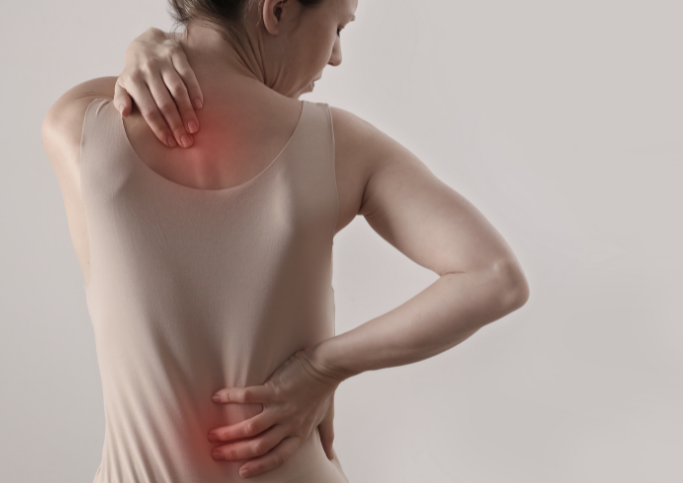
Cannabis is constantly under study for its medical benefits — most of which center on things like pain relief and inflammation. We already treat some of these symptoms by smoking cannabis. Few know just how different edibles are regarding their potency, however.
Edibles provide a more extended, different type of high due to the changes THC goes through in the liver. The change impacts not only the enjoyable aspect but the medicinal.
Reduces Nausea
THC research focuses on reducing nausea symptoms. In the medical field, THC already helps ease symptoms of nausea. So an edible version is almost a no-brainer.
While edibles take longer than smoked THC or sublingual drops, they can’t compensate for unexpected nausea. Therefore, edibles should focus on regularly occurring nausea and not be a quick solution for sudden issues.
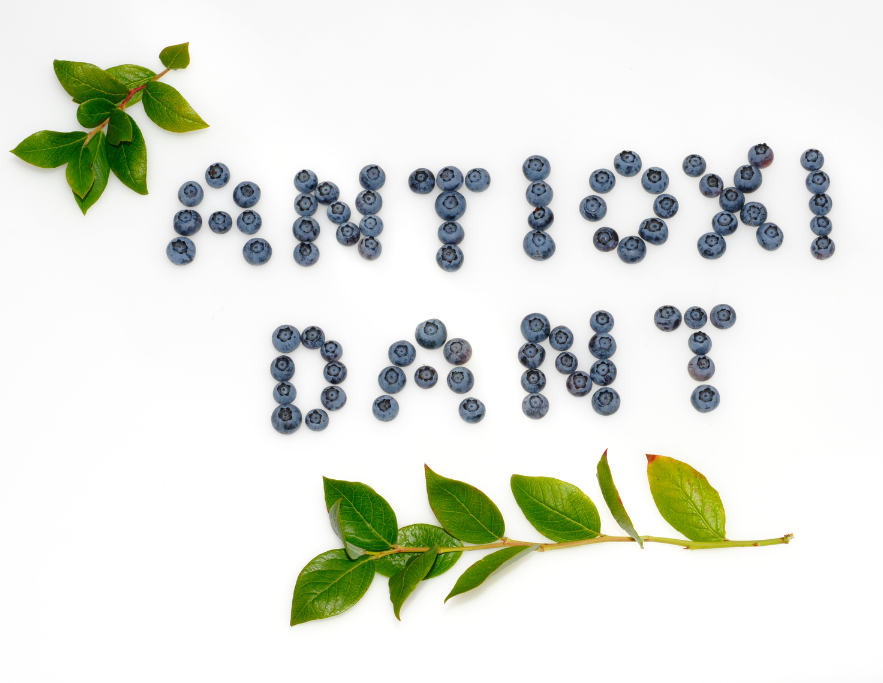 Rich in Antioxidants
Rich in Antioxidants
Antioxidants already have a positive reputation for their health benefits. More often than not, you hear about them when discussing fruits and vegetables. But these two groups don’t limit the extent of antioxidants.
The antioxidant content found within a THC edible has the potential to help with anxiety, some forms of cancer, and free radicals. While not the best possible application of antioxidants, it still acts as a potent benefit.
Wrapping Up: Why Do Edibles Provide a Different High?
In conclusion, there are several reasons why edibles provide a different high. Namely, the biggest reason edibles are unique is because of how the body metabolizes them. Compared to smoking or vaping, edibles metabolize through the liver.
All forms of THC ingestion provide a definitive experience. The differences between edible THC and other formats are notable. The ‘high” from edibles is different because it has to pass through the digestive system. The extended trip alters the THC into a new structure and lasts longer.
Metabolism plays a significant role in how someone may experience THC edibles, and different people will metabolize them differently. However, on top of metabolism, genetics can further impact the experience. For example, genetic differences in liver enzymes can affect how someone metabolizes things like cannabis and medications.
Even things such as a person’s BMI, diet, and physical activity levels can all alter the experience with edible THC.
Regardless of experience outside of edibles, trying new ventures in moderation is always best to ensure you can tolerate them well. Stay safe by going slow and starting low.
Sources:
http://publichealth.lacounty.gov/sapc/MDU/DE/MarijuanaEdiblesFactSheet040416.pdf
https://www.ncbi.nlm.nih.gov/pmc/articles/PMC3570572/
https://www.ncbi.nlm.nih.gov/pmc/articles/PMC3196989/
https://pubchem.ncbi.nlm.nih.gov/compound/11-Hydroxytetrahydrocannabinol
